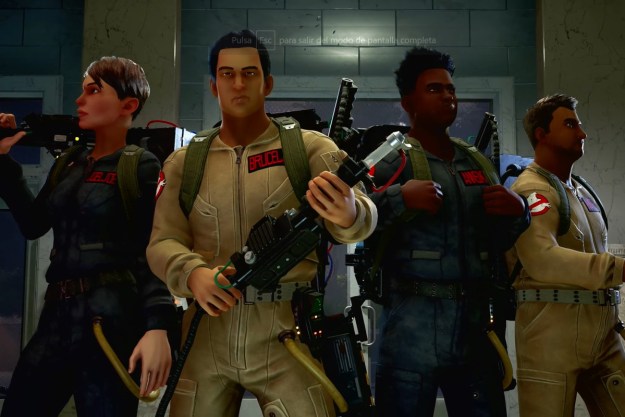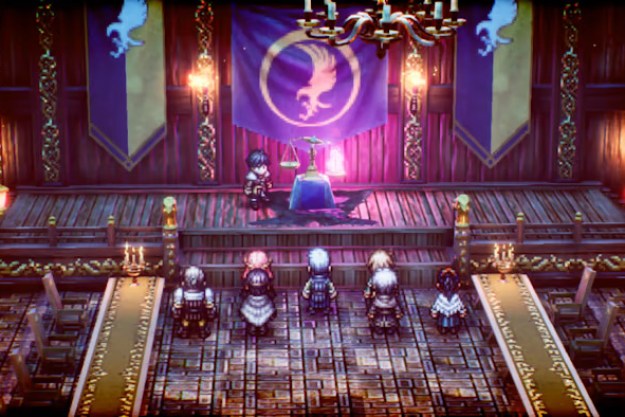South Park has seen its fair share of video games since its premiere in 1997, but the series only hit its stride in interactive entertainment with 2014’s South Park: The Stick of Truth. Developed by Obsidian Entertainment, now mostly known for Pillars of Eternity and The Outer Worlds, The Stick of Truth combines the style and humor of the show with a fairly basic RPG shell. Despite its simplicity, The Stick of Truth still has a learning curve. In order to get the most out of the game, we’ve put together a quick guide on getting start in South Park: The Stick of Truth.
There are various interconnected systems that make up the bulk of The Stick of Truth’s gameplay, and although it’s helpful to learn about them, you don’t need to worry too much about them while playing. The Stick of Truth is only around 10-12 hours long, and it has a heavy focus on multiple playthroughs. If you miss something your first time through, you can always jump in and experiment on a second — or even third — run.
Creating your character
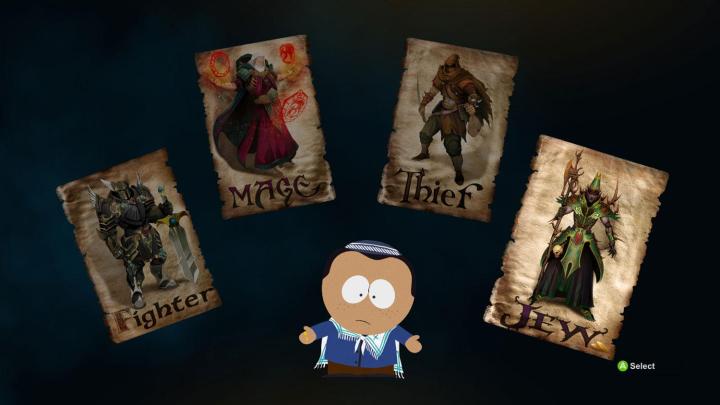
Released in early 2014, it shouldn’t come as a surprise that The Stick of Truth starts with a character creation screen. You can dress up your “new kid” however you like — give them a black eye, apply a spray tan, it’s up to you. None of these customization options affect your character. Shortly after this screen, though, you’ll need to choose a class, and there are some differences between them.
The four character classes are Fighter, Mage, Thief, and Jew (Paladin). Each class has a different set of skills that you can unlock and level up throughout the game. The Mage class, for example, come with status-inflicting spells like Dust of Dreams and Lightning Volt, while the Thief class comes with Mug, an ability that lets you stun an opponent while stealing an item from them. In addition to the different abilities, each class has class-specific weapons. Warriors, for example, are the only ones who can use the Laser Sword.
Choose the class that seems most interesting to you and run with it. The Stick of Truth isn’t too complex, and each of the classes are balanced for the game. Plus, with a runtime of around 12 hours, it’s easy to experiment with other classes on subsequent playthroughs.
Level up
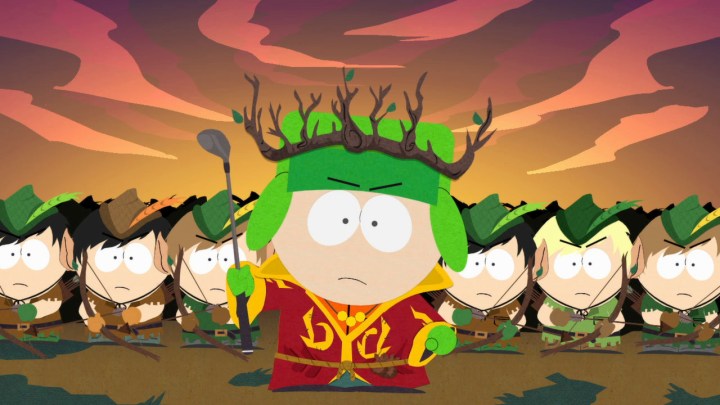
Whichever class you choose, upgrades work the same. You level up as you earn experience in The Stick of Truth, and each new level gives you one point to spend on an ability upgrade. You’re only able to put these points into your starting ability early on, but each of the other four abilities unlock as you rise through the levels. You’ll never be able to upgrade all four completely since the level cap is locked at 15, so take a look at the upgrade paths for each of your abilities before you start spending points. You’ll get 14 upgrade points over the course of the game (your first upgrade is at level 2), and each ability can be upgraded four times. Focus on maxing out your favorites first, then assign the rest of the points however you like.
You’ll reach the level cap before you beat the game, even if you ignore every side quest. This, like class selection, is another way The Stick of Truth pushes players toward multiple playthroughs. In addition to unlocking new skills, each piece of gear in the game has a level attached to it. Although you’ll reach the level cap by the end, it’s worth tackling a few side quests early to buy better gear.
Perks of social media
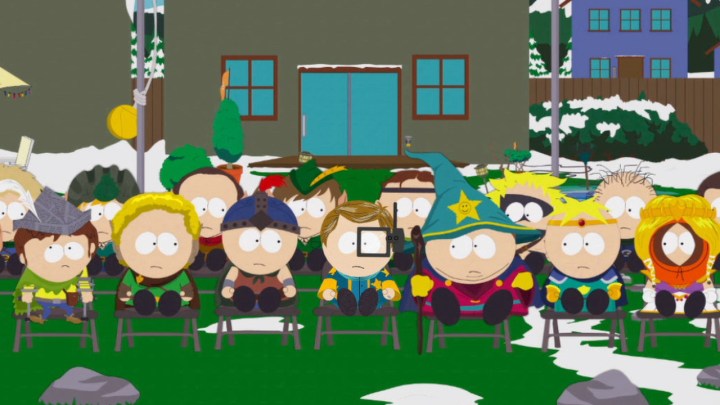
In addition to new abilities, you can also unlock perks. However, you don’t unlock them through leveling. Instead, you can meet friends on the streets of South Park and add them as a friend on Facebook. As you add more friends, you’ll unlock new perks. Your first perk comes after you amass seven friends, and from there, you’ll need a different numbers of friends for each new perk (your third perk requires 18 total friends, while your ninth requires 85). There are 20 perks in The Stick of Truth, but you can only have up to 100 friends on
Again, experimentation is a good idea on additional playthroughs. There are a few perks you should pay attention to, though. Healing Wind is ideal for Mages, healing you whenever you cast magic, while Pyromaniac is excellent across classes. It offers you increased damage while reducing damage from opponents. Apprentice is also a good early-game pickup, increasing your PP by 20%.
Gear up
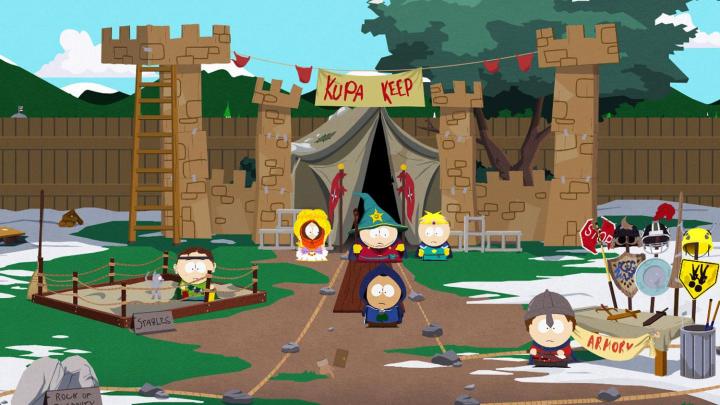
Although your cosmetic choices in the beginning of the game don’t matter, you’ll want to pay attention to your costume throughout the rest of your Stick of Truth playthrough. Instead of equipping armor, you’ll equip a costume. There are three slots for costumes: Head, body, and hands. In addition to cosmetic changes, each piece of gear offers a different bonus. For example, the Jester’s Cap gives you 1 PP whenever your Buddy attacks — more on that in a moment — while the Monk Robes increase your max HP by 150 and heal you for 50 HP each turn if you have a thrown weapon equipped. The Super Samurai Spaceman and Ultimate Fellowship DLC packs add more costumes to the game.
Additionally, there are weapon strap-ons and equipment patches, together simply called “patches.” Patches, like other gear, have a level requirement, and you don’t need to equip them if you don’t want to. However, they offer some significant bonuses. The level 14 Rubber Grip weapon strap-on boosts your weapon attacks by 250, for instance, while the level 12 Ghost Pepper equipment patch offers a 12% boost to fire damage. You’ll generally find patches as rewards for sidequests.
The other noteworthy portion of your inventory to keep an eye on is junk. As you explore South Park and poke around in the various containers, you’ll find an assortment of objects that don’t have any real use. They’re often fun, little Easter eggs, and it’s often worth reading the item description if you’re a fan of the series — but look at your junk as money and nothing more. Whenever you visit a merchant, be sure to sell everything off. There’s no “sell all” option, but you can spam the Y/Triangle button to sell full stacks (useful when you have more than one of a particular junk item). Just keep spamming the button until the list is cleaned out.
Fight it out

Combat in South Park: The Stick of Truth is inspired by traditional JRPGs and their turn-based battles. Each combat turn for you and your Buddy — you’re accompanied by one of several familiar faces for most of the game — consists of two phases: One for using items (and certain Buddy Commands, such as Butters’ Healing Touch) and one for attacking. It’s important to remember that your turn always ends on an attack. If you want to use a consumable — whether it’s for healing, support, or offense — you’ve got to use it first. Stock up on support consumables like Speed Potion, which gives you two attacks in a single turn, or the Water Balloon, which removes positive enemy status effects.
You can also swap Buddies in and out of most battles at any time (lowermost option on the radial menu), but note that switching leaves the new Buddy unable to act for the rest of the turn. Note as well that while your Buddies improve over time, you never have any control over how they level up or what equipment they’re using; you simply manage their actions in combat.
Outside of your actions, there’s a real-time element to The Stick of Truth’s combat. Some late-game weapons have different abilities, but it usually comes down to pressing a button at the right time when you’re attacking or defending. If you block all of the incoming attacks from an enemy, you have a chance to counterattack, too, which is essential for some of the tougher battles.
Learn your status effects
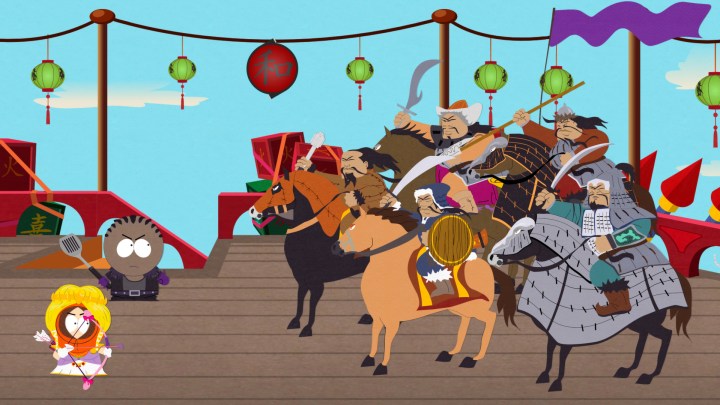
As we just covered, combat is fairly straightforward in The Stick of Truth. The game starts to get complex when it comes to status effects. You’ll encounter status effects in basically every battle in The Stick of Truth, and although you can ignore them and still get through the game, the added depth of status effects can make battles much more interesting.
There are a lot of status effects, but they’re typical RPG fodder. Hasted allows your character to take two actions in a turn, while Riposting allows enemies to dodge and counter all melee attacks. There are some hilarious ones, too, like Tough Skinned, which protects the character from most damage due to years of smoking. You’ll learn more of the status effects as you play, but you still want to be prepared for them. Stock up on Bottled Water to remove negative status effects from you and your Buddy, and Water Balloons to remove positive status effects from your opponents.
Outside of the standard status effects, there are also vulnerabilities and immunities, matching the different magic types in the game (Vulnerability to Cold and Immune to Fire, for example). Immunities block all damage of that type, while vulnerabilities add 50% more damage from that type, so make sure to pay attention if you’re using a lot of magic.
This isn’t Final Fantasy, but…

Turn-based combat isn’t all The Stick of Truth borrows from JRPGs. Like the Final Fantasy games, The Stick of Truth has summons. There are four summons in the game, each of which is a sidequest reward. The kicker: You can only use each summon once per day, and The Stick of Truth takes place over three days. You can’t unlock Mr. Hankey, one of the summons, on the first day, either. That gives you 11 total uses of summons throughout the game, which goes to show just how powerful they are.
Each summon has a different animation, but they all do the same thing: Wipe out the entire enemy party. Although extremely powerful, you can’t use summons in boss battles. The four summons are Mr. Hankey, Mr. Slave, Tuong Lu Kim, and Jesus, and you can unlock them by completing the sidequests Dropping the Kids Off, Mr. Slave’s Package, Mongolian Beef, and Find Jesus, respectively. You can complete all but Dropping the Kids Off on the first day, so we recommend you do so, even if you don’t plan on using summons often. After you use a summon, you can replenish your use by speaking with the character on the next day.
Wandering around

The playing area you begin with during Stick of Truth is pretty small. However, pretty quickly, the territory expands so players can thoroughly investigate locations from most of the TV series’ 24 seasons. A tip for new players: If you find a new place or a treasure that you cannot access, you likely just haven’t found the right tool yet to unlock it.
Some paths require very specific skills or tools to access— for example, if a crowd of mice is blocking your way, you need to use fart magic to clear the area. You have to use a teleportation device to interact with the grey antenna things. You’ll be able to wipe out red-glowing cracks in the landscape with a well-powered hit from your weapon, but you can’t destroy green-glowing cracks without a later-game fart spell. Your character will stumble upon tiny holes and gaps in the environment that are too small to fit in, but if you remember where they are, you can visit them later in the game. When you have the ability to fit into those spaces, trust us, you’ll know it. Fortunately, the fast travel system in the game allows players to travel back to places with no issue.
This game features something interesting down nearly every pathway. Keep an eye out for new tools, abilities, or cash along the way. You’ll reach your level’s capacity before the end of The Stick of Truth, so a major part of the game is thoroughly turning over every rock to find new items.
Editors' Recommendations
- Cities: Skylines II beginner’s guide: tips and tricks to get started
- One Piece Odyssey: tips and tricks to get started
- Pokémon Scarlet and Violet: 8 tips and tricks to get started
- God of War Ragnarok beginner’s guide: 7 tips and tricks to get started
- Tunic beginner’s guide: 8 tips and tricks to get started


